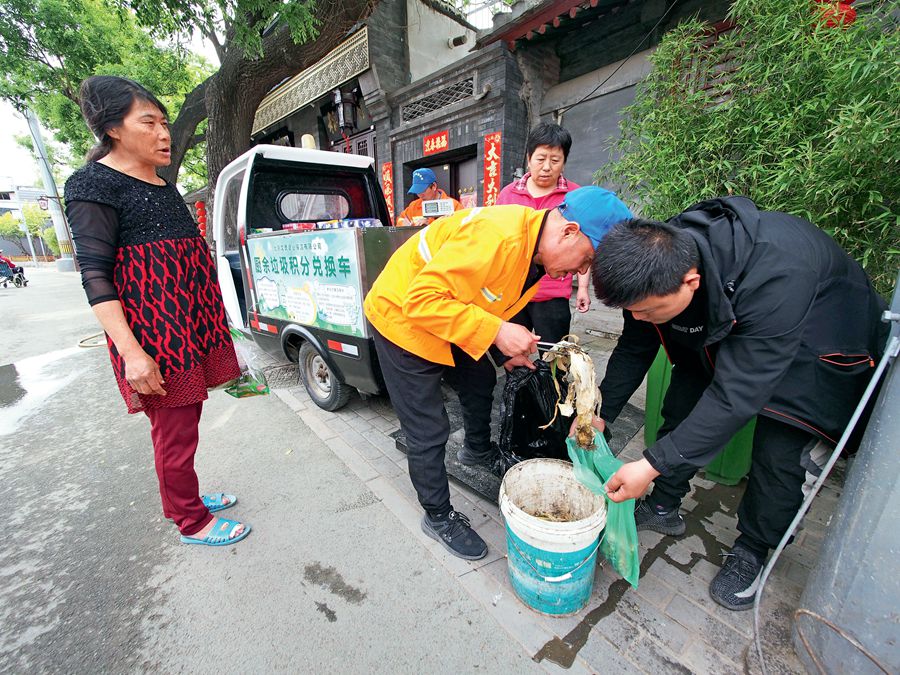ECOLOGICAL civilization is a new form of civilization that is based on industrial civilization and capitalizes on its strengths. It represents the material and spiritual achievements humankind has made by following the principles of maintaining harmony between man, nature, and society. It also reflects the civility and progress of a society.
China has incorporated the building of ecological civilization into a five-sphere integrated plan to promote coordinated economic, political, cultural, social, and ecological advancement.
Ecological civilization is a matter of people’s wellbeing, the future of the nation, and the endurable development of the Chinese nation. Its building should be based on the carrying capacity of the resources and environment, and follow the natural law. The ultimate goal is to facilitate sustainable development and harmony between man and nature.
China pledges to pursue a mode of sustainable development that features increased production, higher living standards, and healthy ecosystems. It works to promote global ecological civilization, and plays an active and leading role in the process. Over the past years, particularly after the 18th National Congress of the Communist Party of China (CPC), China has been devoting much effort on all fronts to build an ecological civilization. Preliminary results have been made, spearheading high-quality social and economic development.
Putting Ecological Conservation First
Human beings are part of nature, while nature provides humans with the essential space and means of production for their survival and development. Based on this understanding, human beings should follow the laws of nature. Destructive exploitation of natural resources will disrupt the balance of man and nature, the results of which are hard to reverse. Ultimately, this kind of development is not sustainable.

A pedestrian and cycling path lined with sakuras in Nanchang, Jiangxi Province, attracts tourists to enjoy nature.
Over the past years, China has been prioritizing methods of ecological conservation. The country rolled out measures to lower coal consumption and control greenhouse gas emissions. It also launched a comprehensive crackdown on high-polluting enterprises.
To protect water sources, China has connected urban planning with water system protection planning, establishing a security system for water resources, rivers, and lakes protection.
Steady headway has been made in waste sorting and centralized wastewater treatment, and soil pollution has also been brought under better control. Performance on environmental protection has been included in the evaluation of local officials, who are now held accountable if they cause environmental destruction.
Recently, China has begun to implement a mechanism for eco-compensation, in which the responsible party that develops the environment must protect it, and whoever benefits from such development must pay any costs incurred. This mechanism has been implemented in key areas, such as the region between the upper and lower reaches of rivers, forests, grasslands, wetlands, wastelands, oceans, waterways, as well as land, no-development zones, and ecologically functional zones.
With a host of measures, a balance between development and environment protection is being struck.
In 2002, water from the Nenjiang River began to be diverted into the nature reserve. Efforts were also made to restore wetlands from arable land. The local government also launched a crackdown on illegal land reclamation and other activities that were harming the wetlands. The measures safeguard ecological security, protect natural resources and biodiversity, and boost sustainable social and economic development.
Saihanba in north China’s Hebei Province used to be the home of barren hillocks frequently hit by sandstorms. With the devotion of two generations, the place has been turned into a lush woodland and an ecological barrier for the Beijing-Tianjin-Hebei region. Through combining the cultures of Manchu and Mongolian ethnic groups, Saihanba has been developed into a first-rate national scenic spot. It is also a “green bank” of sustainable development for generations to come.
These are just a couple of many similar cases, but the secret for their success is the one common denominator that people respect, adapt to, and protect nature. These practices boost local development while protecting the natural environment.
Innovation-driven Green Development
Many countries across the world have reached a consensus on the importance of environmental protection. The question is how to protect it. China is taking a proactive approach in this regard, and is carrying out environmental protection in development. The fundamental purpose is to achieve sustainable development. By means of technology and across-the-board reform, China pursues green development so as to realize a higher level of environmental protection.

Kitchen waste recycling services are provided through an electric vehicle in Moshikoucun Community in Beijing. Gifts are given out to people in exchange for the recycled garbage.
Chinese President Xi Jinping said, “Lucid water and lush mountains are invaluable assets.” Transforming the development model, adjusting economic structure, building ecological civilization, and pursuing innovation-driven green development represent China’s essential choice to break environment bottleneck and achieve sustainable development. All this is generating a new driving force for the country’s economic and social development in the new era.
The essence of green development is to strike a balance between economic growth and ecological conservation. On the one hand, economic growth can no longer be promoted at the expense of excessive consumption of resources and destruction of the environment. Ecology-driven and ecologically friendly industries should be encouraged. On the other hand, high-quality ecological resources can be turned into residents’ proceeds by pricing them based on their scarcity. In this way, it can both respect and reflect the value of the environment. In other words, a trading system for the use of ecological resources should be established.
Institutional and technological innovation also plays a key role in the process. Emerging technologies will facilitate economic transformation, structural adjustment, and high-quality growth. Institutional innovation on the other hand is about the establishment of trading systems for property rights of natural resources, as well as environmental and climatic resources.
As a result of the future-oriented green development measures implemented since 2003, east China’s Zhejiang Province has achieved its development goals with its ecological environment index and economic competitiveness leading the country.
In southeast China’s Fujian Province, the local government has implemented a policy of buying forests back. To date, it has bought back some 20,000 hectares of forests, effectively protecting the ecology in the forests while benefiting the farmers who have contracted the property rights of the forests.
Local governments have also launched loan programs with forests as collateral to resolve the problem of financing difficulties. In the city of Sanming alone, some one million hectare of forests have been used as collateral for loans of more than RMB 23 billion.
The Sanjiangyuan area is the headwaters of the Yangtze River, Yellow River, and Lancang River. Due to its fragile ecosystem, the place used to have development activities restricted or banned. However, ecological conservation efforts during recent years have spurred new opportunities for green development thanks to a host of top-level designs.
In fact, provinces, municipalities, and regions nationwide have been exploring green development models that suit local conditions.
Concerted Efforts for a Beautiful Home
Social and economic development is enabled by production, and is also driven by consumption and demand. One unit reduction of consumption at the bottom of the ecosystem can not only reduce resource investment, pollutant emissions will also be cut by a hundred or even thousand-fold. Consumption increase will offset the benefits brought by productivity improvement and energy saving. Therefore, it is imperative to foster a green lifestyle and consumption patterns that are in line with the national conditions for an ecologically advanced society.
Green consumption and a low-carbon lifestyle is the result of economic and social development in China once it has reached a certain stage. Also known as sustainable consumption, it satisfies both people’s needs for production and living and the demands for sound development of the ecological environment. Following the principle of pursuing harmony between man and nature, it reflects a change of development direction from focusing on economic scale to its quality, and from pure economic to the overall effects on society.
Over the past years, China has made evident progress in boosting a green and low-carbon economy. It has increased technological input in means of production to transform it into an environmentally friendly and pollution-free model. The country has also increased the supply of high-quality green products.
By dint of new technologies of big data, information technology, Internet of Things, and cloud computing, China fosters a low-carbon lifestyle and consumption pattern, helping the country go digital in terms of production, logistics, and branding. A system to track product information has also been established, by which consumers are able to check product information, including the supply chain and shipment by just scanning a quick response code or a bar code. These efforts are encouraging consumers to buy more green products.
Another change has taken place on the road. In Beijing, the public transport network now covers the entire city and neighboring regions. More and more urban residents are changing their choice of commuting from private cars to environmentally friendly and cheap public transport. Ubiquitous sharing bicycles have also made it much easier to live greener.
According to some statistics released by the local transportation authority in 2018, 73 percent of residents in Beijing chose to use public transport after the initiative for green commuting was introduced. Other cities like Shanghai, Hangzhou, and Xiamen are also exploring new initiatives to make safe, comfortable, convenient, efficient, and low-cost public transport services available to residents.
Remarkable achievements of ecological civilization construction promote China’s own high-quality development, and also enable it to make contributions to global ecological governance. People of different countries live on the same planet, and are members of the same community with a shared future. We should enhance exchanges and cooperation in building ecological civilization and make concerted efforts to mitigate climate change in order to build a beautiful home.
LI MENG is director of the department of environmental economics and management, Institute for Urban and Environmental Studies, Chinese Academy of Social Sciences.

